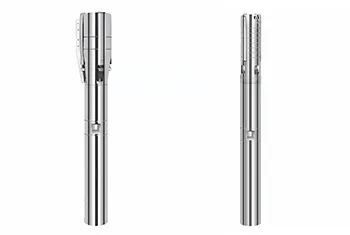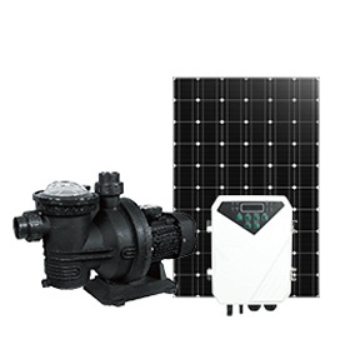
Solar Water Pump for Irrigation
Seventy percent of the world’s freshwater extraction is used for irrigation. Solar irrigation pumps transport water to areas without any existing infrastructure.
Irrigation water is crucial for sustaining the growth of fruits, vegetables, and grains to feed the world’s population.

- Drip Irrigation or Micro-Irrigation
Drip irrigation is a highly effective method of crop irrigation, offering the advantage of lower evaporation compared to other irrigation methods, and is the most common type of “micro-irrigation.”

- Furrow or flood irrigation
Surface Irrigation (also known as flood irrigation or furrow irrigation) is one of the oldest methods of irrigating fields. While not the most efficient method, it is low-cost and simple in technique.

- Sprinkler Irrigation
Sprinkler irrigation is a commonly used modern irrigation system, widely employed on large farms. In high-pressure systems, there may be powerful jets of water along the pipelines. As a more modern alternative, low-pressure sprinkler systems (drip irrigation) are also being increasingly utilized.
How Solar Power Work

- When sunlight strikes the surface of the solar panels, the movement of electrons generates direct current, which is transmitted through connected wires to the pump controller.
- The solar pump controller acts as the system's brain, using advanced technology and sensor inputs to rotate the submersible motor and drive the pump to overcome gravity and push water to the surface.
- The size of the solar water pump is determined by calculating the total vertical feet of head required for pumping, the pressure needed, and the total water volume required per day.
Solar Irrigation Pump Systems
Increasing crop yields is an urgent concern, and in agriculture, utilizing solar energy to power irrigation systems may be a solution to meet energy demands. Solar irrigation systems typically consist of three main components: solar panels, MPPT controllers, and water pumps. As the use of solar pump systems for irrigation becomes more prevalent, designing such systems requires consideration for achieving maximum reliability and economic operation.
How to choose a solar pump:
1. Confirm your technical requirements
- How deep is your well (borehole)?
- What is the distance between the tank and the well(or other watersource such as a river)?
- What is the height of the tank?
- How much water need to irrigation a day (litres/day)?
2. Choose according to your needs
Calculate the “actual lift needed” and find an appropriate pump.Then choose the most suitable pump according to different flow rates and prices as well as pump materials.
How to calculate lift :
- h1 Lift underwater (the height between the water pump and the water surface)
- h2 Lift above water (the height between water surface and the wellhead)
- h3 The horizontal distance between the well and the water tank
- h4 Tank height
Actual lift required: H=h1/10+h2+h3/10+h4
How to calculate head:
- h3 the horizontal distance from the
water source to the water tank
- h4 vertical height from water source
to water tank
H=h3/10+h4


How to Choose a Solar Panel?
The power of the solar photovoltaic panel array is recommended to be 1.3 times or more than the power of the water pump.The voltage of the solar photovoltaic panel array needs to meet the voltage range of the water pump.
Example:
3 Inch Plastic Impeller Solar Submersible Pump
Model: 3DPC3.5-95-72-750
- Pump power: 750w
- Best input voltage: 90-120v
- Maximum open circuit voltage: 160v
Requirements for solar photovoltaic panel array: power ≥ 750w*1.3 (that is, power ≥ 975w)
- VMP voltage > 90v
- VOC voltage < 160v
Solar panel:
- power 330w
- VMP voltage 37.26v
- VOC voltage 45.64v
3 solar panels in series:
- power 330w*3=990w
- VMP voltage 37.26v*3=111.78v
- VOC voltage 45.64v*3=136.92v
In this case, the power and voltage requirements of the pump can be satisfied, so this solar photovoltaic panel array scheme is acceptable.
Is a battery necessary?
The battery is not necessary, if you need to use it at night or in rainy weather, you can choose AC/DC hybrid solar submersible pump.
How to choose a battery?
If you need to use a battery, a charge manager must be connected. The voltage after the battery is connected needs to meet the voltage of the water pump. The connection method of charging manager is shown in the figure.
How to select pump extension lines?
The water pump comes with a cable of 2 meters. The length can be customized according to your actual needs. Customers can also extend the cable themselves.
Notes for selecting cables:
- Select waterproof cables.
- Select 3-wire or 4-wire cables.
- 2.5sq cables are recommended below 50m; 4sq cables for 50m-100m; 6sq cables for 100m-200m.
If the cable required is more than 200m, it is recommended to choose a solar submersible pump with built-in controller

References
Contact Us To Get A Detailed Solution For Free
We are famous for our professional services and solutions. Please contact us to let us know what you need.
We will provide the best solutions for your needs.
Solar Submersible Pump Services
- Pre-sale Service
- 24 hours online, response within 1 hour
- Provide complete solutions
- Enforcing Contracts
- Standardized service process
- Professional product inspection before leaving the factory
- Provide order tracking and logistics tracking
- After-sale Service
- 2 years warranty; provide solutions within 24 hours
- Provide installation, maintenance and repair videos
- Online training available












